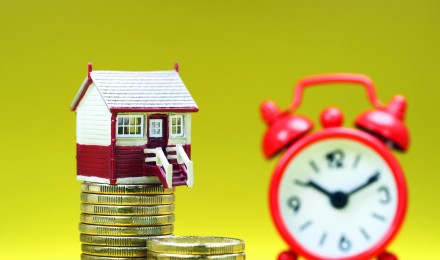Fannie Mae is the largest mortgage financier in the country. Being a government backed entity this company can take on a lot of risk. While a lot of risk often means a lot of reward, it also means a lot of loss when things go south. Just a few years ago, when the housing market crumbled, the company lost billions of dollars. They needed the government to help them out of the pickle they were in. But now, as the housing market is continuing to rise, Fannie Mae is recouping those losses: to the tune of $17.2 Billion in profits for 2012.
There are three groups (aside from the borrower) that are involved with the lending process. The consumer will go to the loan originator (group one) to get the ball rolling. Their mortgage broker or banker is the one that has first contact with them. The originator will often sell the loan to Fannie Mae (group two), getting their money back so they can go and issue another loan. The originator may, or may not, also be the loan servicer (group three). The servicer works with the client to collect payments and see to it that Fannie Mae gets regular payments. When the borrower is unable to pay their bills, the home is foreclosed. This means that Fannie Mae is no longer bringing in money on that property. Often the house is sold for well under what is left on the loan, and Fannie Mae is forced to take a loss.
This is precisely what happened just a few years ago. But since the housing crash was so large, the company was not able to just write off the loss, they had to take a bailout from the government to help keep them afloat. But now that home prices are increasing, and more people purchasing houses, Fannie Mae has started to see those profits again. In fact, in the last three months of 2012, Fannie Mae saw a profit of $7.6 Billion dollars bringing the year’s total to $17.2 Billion, more than double their highest profit year in history.
There are a lot of people who get indignant and like to complain when they hear of companies that make that much money, especially after requiring a government bailout. But this is what keeps the US economy moving, and Fannie Mae does not just hoard all that profit. They pay out a significant portion of it in dividends back to the US treasury. Out of their $17.2 Billion profit in 2012, they returned $11.6 Billion. So far in 2013 they have given more than $4 Billion to the US Treasury. And anytime money is moving in the economy it will spur on further economic growth; this money movement is no exception.
Without Fannie Mae, many homes would simply not be able to be financed. They have a huge pool of money from where they can draw in order to allow institutions to keep lending. But when there is that much money in one place and one company owning that many mortgages, there is a significant portion of risk. The last record profit that this company made was $8.1 Billion in 2003. After years of struggling it is good to see the market making its recovery.
Fannie Mae is the largest mortgage financier in the country. Being a government backed entity this company can take on a lot of risk. While a lot of risk often means a lot of reward, it also means a lot of loss when things go south. Just a few years ago, when the housing market crumbled, the company lost billions of dollars. They needed the government to help them out of the pickle they were in. But now, as the housing market is continuing to rise, Fannie Mae is recouping those losses: to the tune of $17.2 Billion in profits for 2012.
There are three groups (aside from the borrower) that are involved with the lending process. The consumer will go to the loan originator (group one) to get the ball rolling. Their mortgage broker or banker is the one that has first contact with them. The originator will often sell the loan to Fannie Mae (group two), getting their money back so they can go and issue another loan. The originator may, or may not, also be the loan servicer (group three). The servicer works with the client to collect payments and see to it that Fannie Mae gets regular payments. When the borrower is unable to pay their bills, the home is foreclosed. This means that Fannie Mae is no longer bringing in money on that property. Often the house is sold for well under what is left on the loan, and Fannie Mae is forced to take a loss.
This is precisely what happened just a few years ago. But since the housing crash was so large, the company was not able to just write off the loss, they had to take a bailout from the government to help keep them afloat. But now that home prices are increasing, and more people purchasing houses, Fannie Mae has started to see those profits again. In fact, in the last three months of 2012, Fannie Mae saw a profit of $7.6 Billion dollars bringing the year’s total to $17.2 Billion, more than double their highest profit year in history.
There are a lot of people who get indignant and like to complain when they hear of companies that make that much money, especially after requiring a government bailout. But this is what keeps the US economy moving, and Fannie Mae does not just hoard all that profit. They pay out a significant portion of it in dividends back to the US treasury. Out of their $17.2 Billion profit in 2012, they returned $11.6 Billion. So far in 2013 they have given more than $4 Billion to the US Treasury. And anytime money is moving in the economy it will spur on further economic growth; this money movement is no exception.
Without Fannie Mae, many homes would simply not be able to be financed. They have a huge pool of money from where they can draw in order to allow institutions to keep lending. But when there is that much money in one place and one company owning that many mortgages, there is a significant portion of risk. The last record profit that this company made was $8.1 Billion in 2003. After years of struggling it is good to see the market making its recovery.







